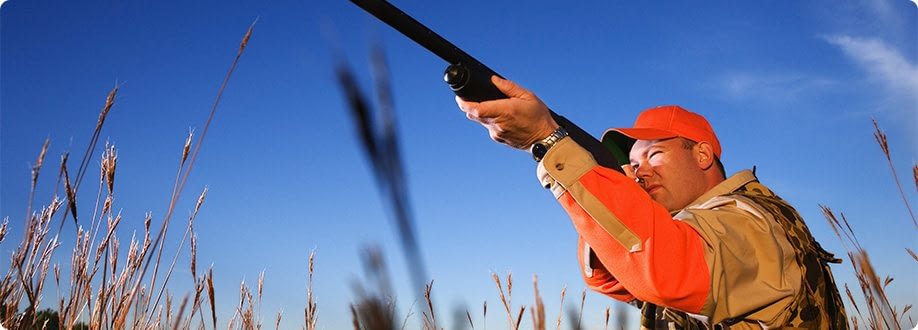

Have gun, will travel
The premier rule of hunting is firearm safety. Even if you’re a skilled marksperson, brushing up on firearm awareness before you head into the wilderness is important.
- Treat every firearm or bow as if it’s loaded. Even if you know you cleaned your gun last night and removed the shells, handle it as if it was full of ammunition. And never allow someone else to handle your firearm, even if they’re trained.
- Control is key. Be hyper-aware of where your muzzle is trained, and never, ever point it — even jokingly — at another human being or yourself. And keep your finger off the trigger at all times until you’re ready to shoot the firearm.
- Take a good look. When you spot your target, make sure you can see what’s in front of it and what’s beyond it. If you can’t see beyond the target, don’t take the shot. A life could depend on it.
- Leave the beer at home. Alcohol impairs reaction time and judgment. Make sure you’re sober when handling a firearm or bow.
Beyond gun safety
Hunting safety doesn’t just stop at loaded firearms. Here are a handful of tips to keep in mind:
- Wear hunter orange. Although the regulations vary by jurisdiction, most big game hunters wear hunter (blaze) orange clothing. Why? It saves lives. The bright color prevents other hunters from mistaking a person for an animal.
- Protect man’s best friend. Many hunters enjoy hunting with their dogs, so safety precautions need to be considered for them, too. To protect Fido from barbed wire fences or thorny brush, keep your dog in a blaze orange chest protector vest. Make sure he or she has identification tags, is microchipped, and is up to date on vaccinations and shots. And make time for frequent water and snack breaks so that your pup doesn’t end up suffering from heat stroke or hypoglycemia.
- Get educated. Enroll in a Department of Natural Resources (DNR) hunter education program. In some states, it’s required in order to get a valid hunter’s license. These programs teach everything from safety to ethics to first aid and are open to the public.
The trouble with tree stands
Although tree stands — a scaffold-type construction that allows hunters to get an elevated point of view — can be advantageous, they can also be hazardous. The small surface area a tree stand provides for sitting, standing, and kneeling can result in loss of balance, leading to a fall which can result in serious injury or death.
- Don’t get too lofty. It’s not necessary to climb more than 15 or 20 feet to get a good view of the landscape. The higher you go, the more risk you take.
- Choose wisely. Always use a sturdy, portable stand. Terrain can be unpredictable in the wilderness, so it’s a good idea to opt for construction that will not only support your weight, but also stay stationary.
- Invest in good gear. A full-body harness will keep you attached to the stand if you lose your balance. And use a haul line to raise and lower your unloaded firearm. You should never climb up and down a tree stand with a loaded gun or bow.
- Educate yourself. Consider taking an online safety course on tree stand safety. It’s free, and it could save your life.
For more information
For more outdoor safety tips, check out Grinnell Mutual’s Front Porch Blog.
The information included in this publication was obtained from sources believed to be reliable, however Grinnell Mutual Reinsurance Company and its employees make no guarantee of results and assume no liability in connection with any training, materials, suggestions or information provided. It is the user’s responsibility to confirm compliance with any applicable local, state or federal regulations. Information obtained from or via Grinnell Mutual Reinsurance Company should not be used as the basis for legal advice or other advice, but should be confirmed with alternative sources.
Filed Under: Blog, Life Insurance | Tagged With: hunting
